03 Jul Hands Behind the Folk School Experience: Meet the Maintenance Team
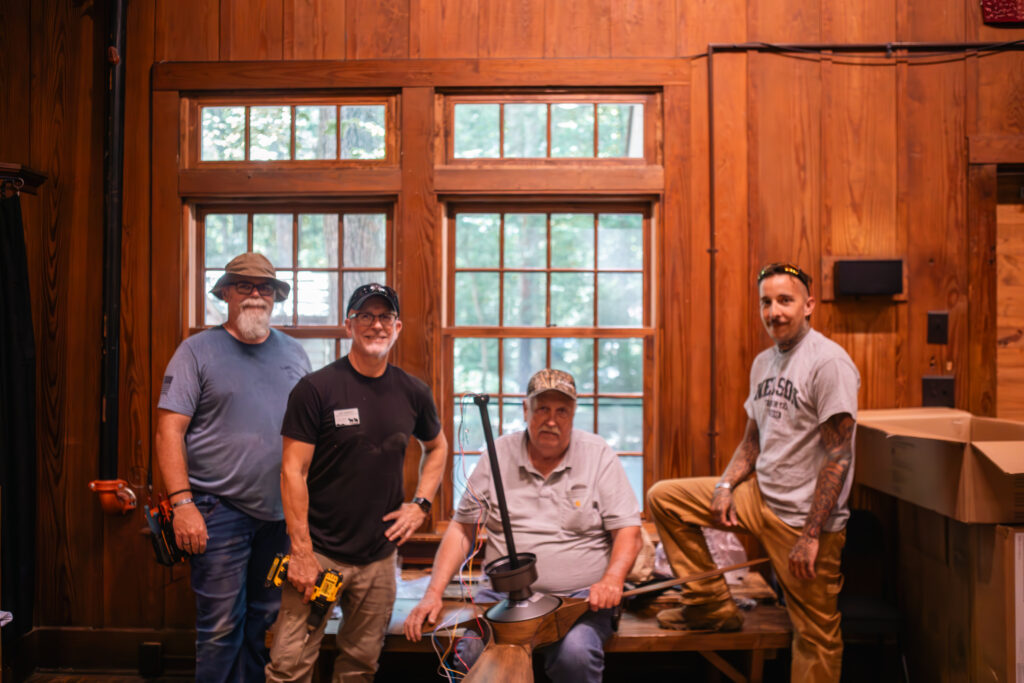
The maintenance team at the Folk School just finished adding new fans to Keith House. Pictured from left to right: Alan VanMarter, Joe Harvey, James Helton, and Joseph Roden.
At John C. Campbell Folk School, beyond the spinning lathes, rhythmic banjo tunes, and the springy looms of the Fiber Arts Studio lies a vital force that keeps it all running smoothly: the maintenance team in the Buildings and Grounds Department.
Toting tools, with boots crunching over mulch, they are carpenters, electricians, groundskeepers, and fixers of things seen and unseen. Lately, they have been quietly transforming the Folk School aesthetic in profound and thoughtful ways.
Building and Grounds Director Joe Harvey has fulfilled his position overseeing the maintenance team for three years now. Harvey finds a convergence between his time serving in the U.S. Army and the work he does on campus.
“I’m retired from the army, and the army gives you lots of jobs and experiences, but this was my favorite. We called it the ‘Directorate of Public Works.’ So basically, all the utilities, new construction, everything fell under that,” Harvey said.
A tight-knit crew of seasoned craftsmen and veterans, the maintenance team works with the essential mission of the Folk School in mind—respect for tradition and innovation rooted in care with an unwavering commitment to people.
“I’m blessed with an amazing crew. James [Helton] has been here 22, 23 years.” Harvey said. “He has just really enjoyed working here and he’s not ready to retire, so he’s gone from five days a week down to three days a week. But his three days a week is so valuable that it’s worth it to me to have them just here Monday through Wednesday versus having a new person here.”
Among the many responsibilities of the maintenance team is overseeing the historical campus and ensuring a total understanding of how things function and how to perform upkeep. This includes overseeing all the utilities on-campus, such as the water system.
According to Harvey, water drawn from two wells is treated in the pump house, where it is chlorinated before being pushed uphill to a pair of large storage tanks. From there, gravity takes over, feeding clean, pressurized water across the entire campus. It’s a quietly efficient system that delivers strong pressure and consistently high water quality.
One of the most recent projects completed by maintenance is the Folk School’s adjacent campground. The team has done ample work cleaning up RV slots, adding firepits and gravel to tent sites, and increasing the capacity for larger RVs.
“Then Alan, he’s retired [U.S.] Navy, the amount of experience he brings from his naval experience—it’s amazing what he’s done, just to be able to apply that here. We’ll have issues that we run into, and he’s able to problem solve it because he had a similar issue on some boat in the middle of some ocean. He’s just figured out how to do it. He loves to help people,” Harvey said.
Alan VanMarter is an esteemed member of the maintenance team; VanMarter has worked diligently on improving the campground and facilitating development, among many other projects.
“Before I was here, I was at an executive security company for 11 years. Before that I was in the military for 22 years,” said VanMarter. “My primary responsibility when I was in the navy was a maintenance-based job, working on structural systems on ships, structural systems in harbors, plumbing systems, electrical systems, hydraulic systems. So, I have experience through all those in a lot of ways.”
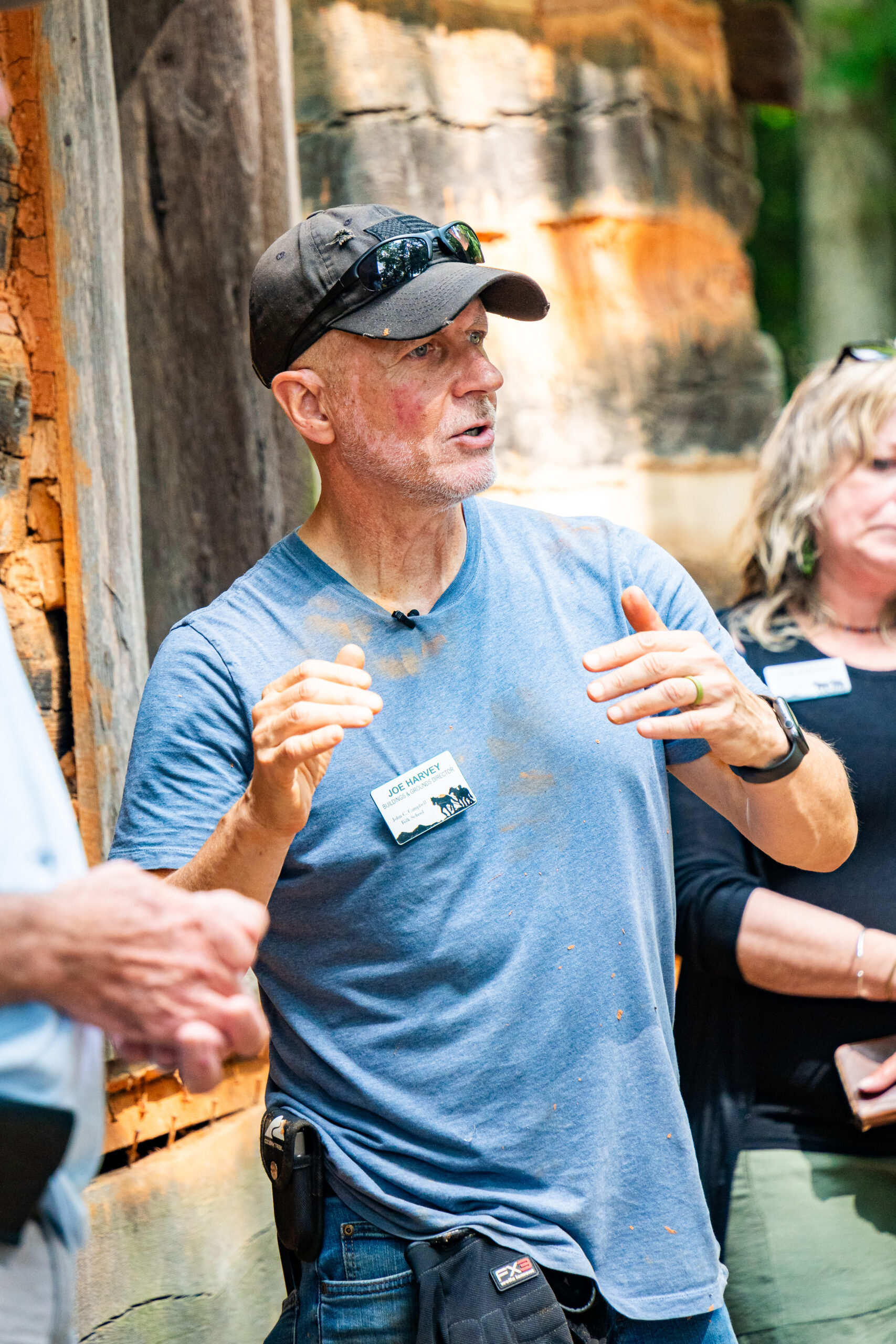
Building and Grounds Director Joe Harvey at the Folk School.
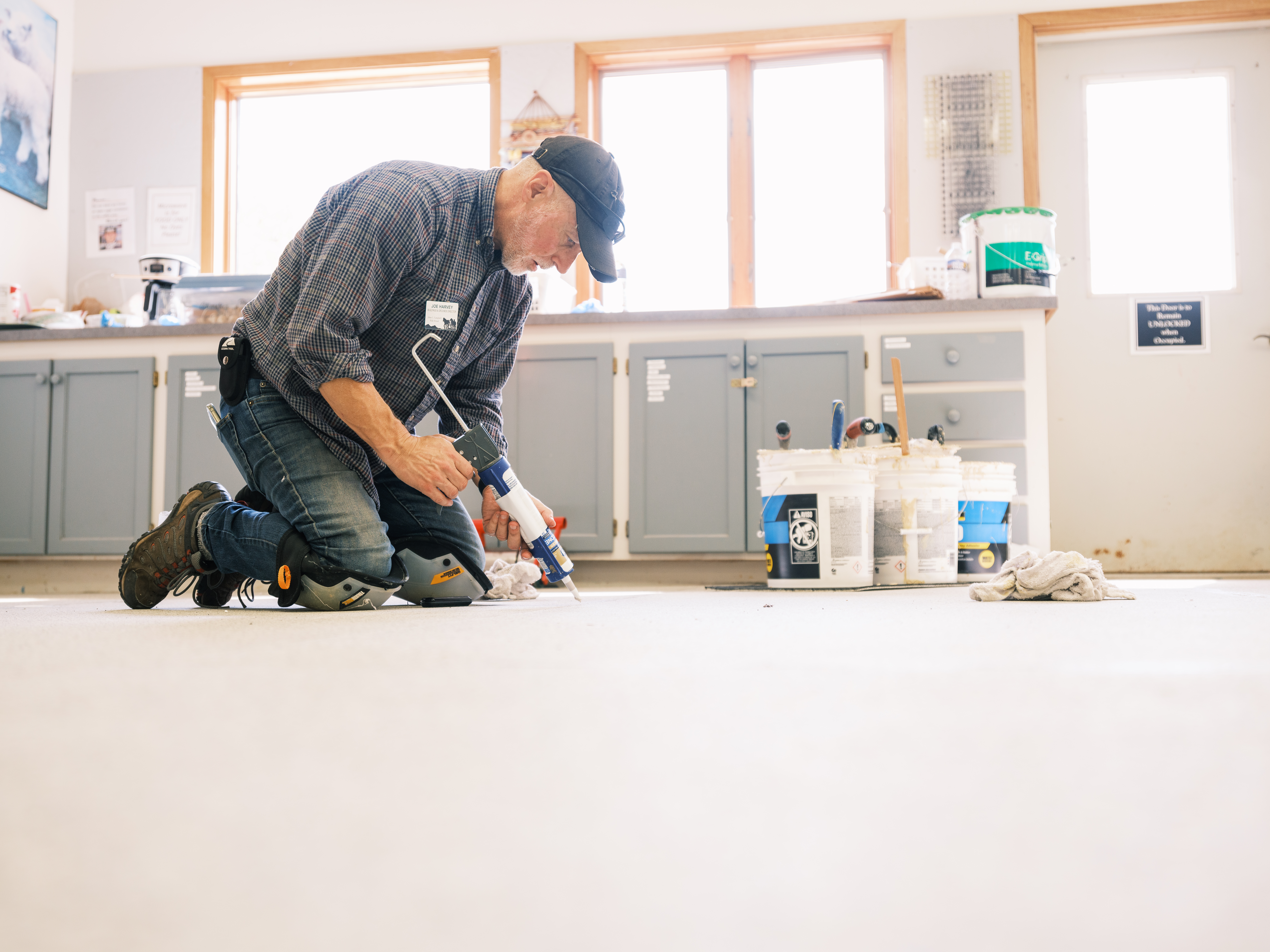
Joe Harvey working on the floor of the weaving studio in the Louise Pitman Fiber Arts building.
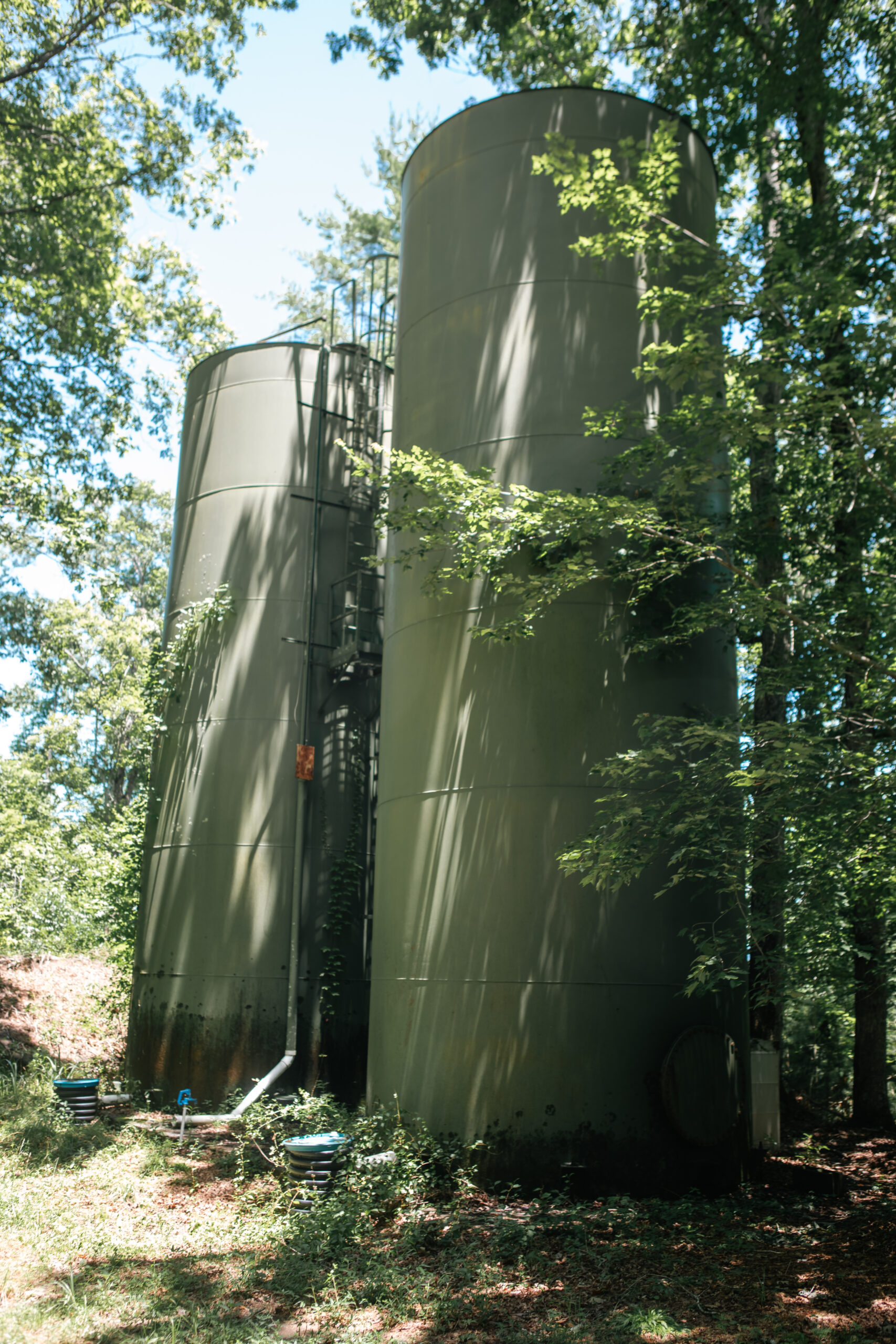
The water towers on campus, each tank has a 30,000 gallon capacity, according to Harvey.
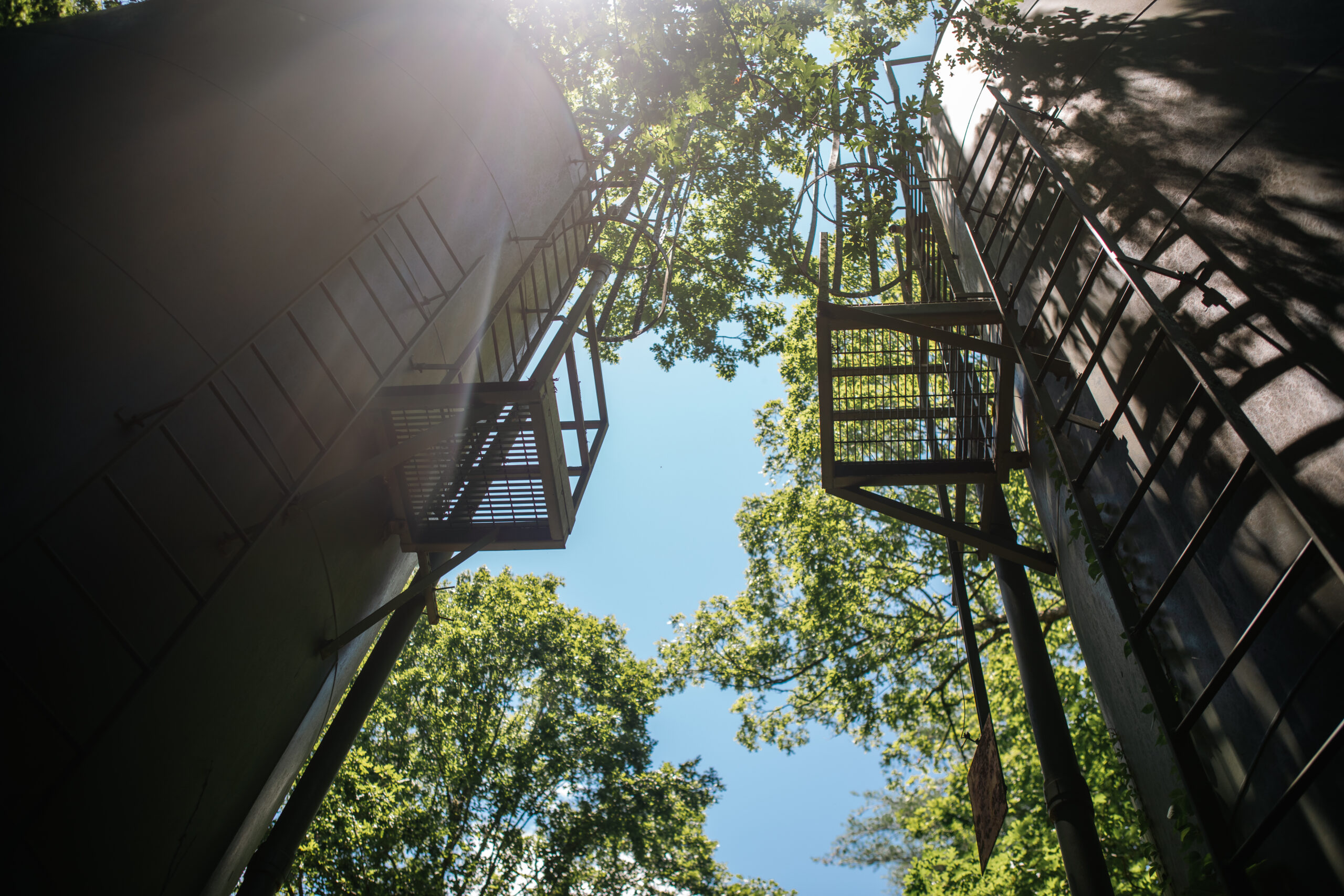
The water towers on campus managed by the maintenance team.

Alan VanMarter at the John C. Campbell Folk School.
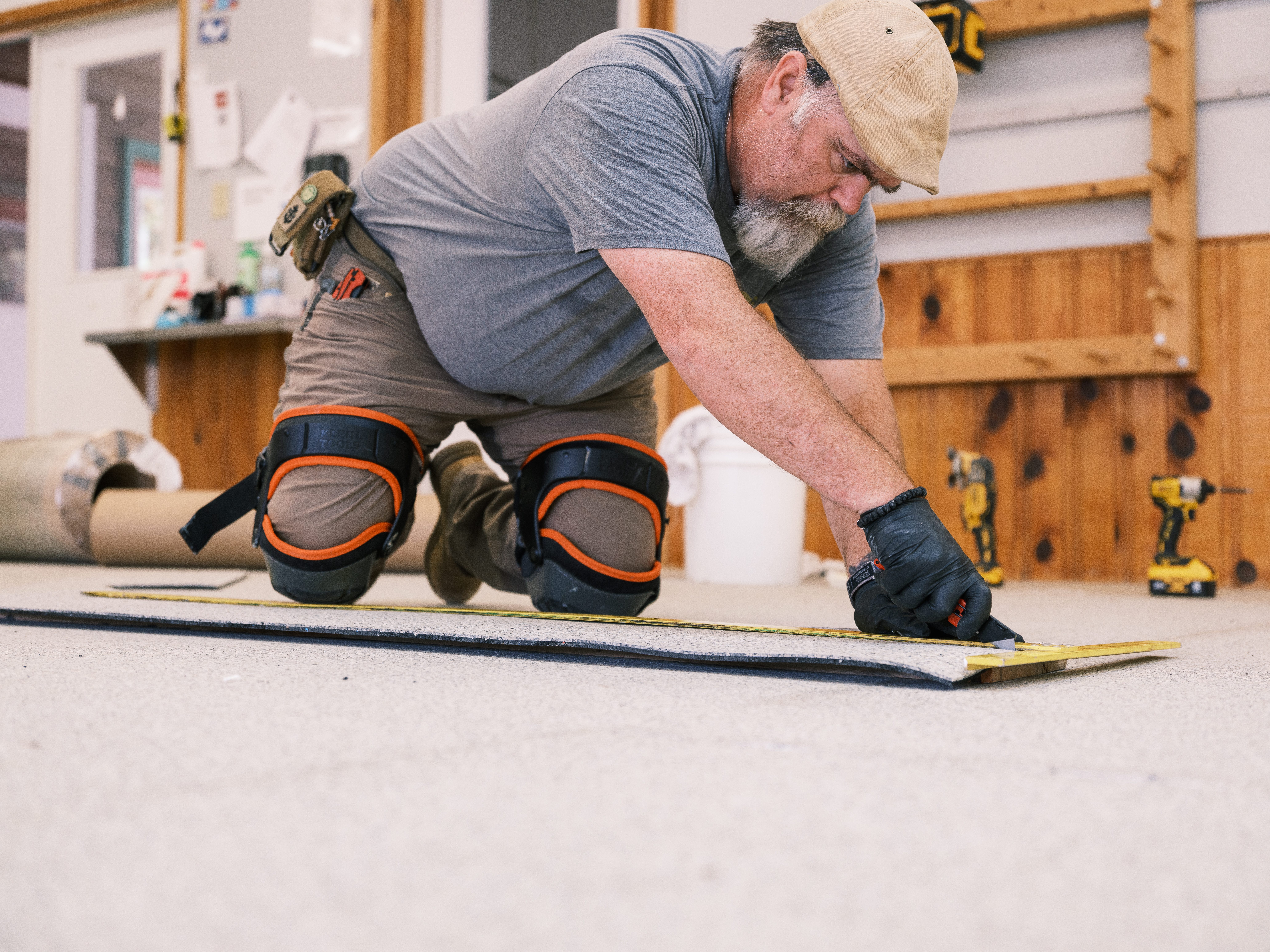
Alan VanMarter working hard on the flooring in the Louise Pitman Fiber Arts Weaving Studio.
Among the many projects VanMarter is involved with is the Log Cabin restoration project. It is significant in protecting historically valuable architecture and offering a space to educate visitors on Appalachian culture.
“If I had to say there’s something that I was most satisfied with completing were the steps coming down from the campground and the little bridge over here [Shady Grove.] Those are probably two of my happiest projects.” said VanMarter. “They just came together well, they were fun, is the best way I could describe it.”
In alignment with a campus-wide initiative to improve accessibility, the maintenance team is laying groundwork for a more inclusive campus experience. Plans are in motion for new ADA-accessible buildings, ensuring retrofits preserve the charm of old timber while welcoming those of all abilities.
“So, we have been given some dispensation to allow us to work within ADA guidelines to get us as close to it as possible but not disrupt the historical value of the property. That’s something we have to take into account any time we do any work on campus. Keith House, for instance, is on the National Registry of Historic Places, so we have to be cautious on how we do things to the interior,” VanMarter said.
Future construction projects are set to blend seamlessly with the Folk School’s architecture, guided by sustainable building practices and a commitment to stewardship of the land, heritage, and the community.
“Bethany wants to look at potential future housing. What we would like to do is have a standardized plan with six to eight fully accessible rooms. Then we take that, and every time we want to build a new house, we use the same plan. You can decorate the exterior to match wherever it is on campus, but inside, they’re pretty much the same, and that’s the new housing project with the handicap access,” Harvey said.
For those who see only the hammer and nails, it is easy to miss the heart behind their handiwork. The maintenance team isn’t just keeping the lights on, they’re building belonging, contributing to spaces that shape the stories of those around them. So, the next time you wander the footbridge in Shady Grove, or flip on the light in your cozy cabin at night, it’s courtesy of the crew behind the scenes.



No Comments